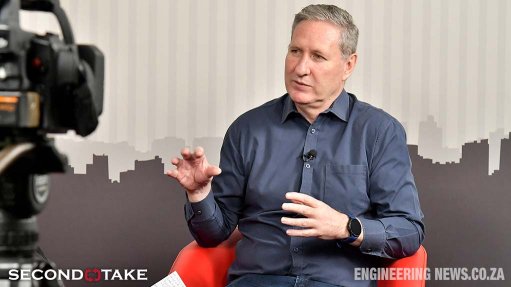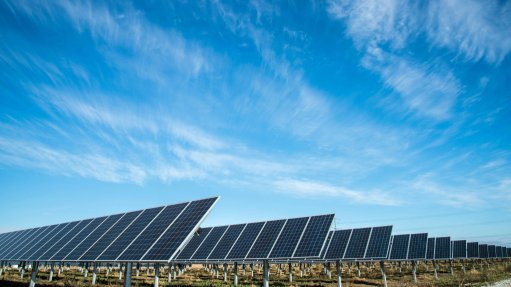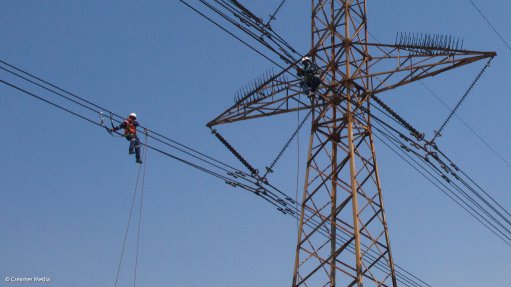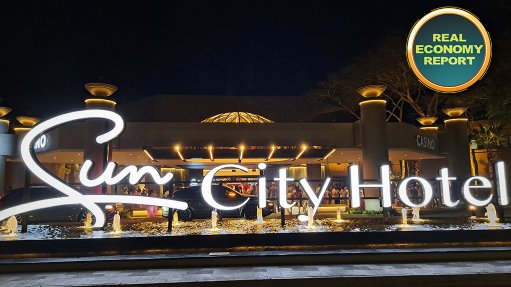Opinion: A call for clear, uniform solar policy in South Africa
In this article, residential solar solutions provider GoSolr CEO and co-founder Andrew Middleton, writes that solar power has the potential to significantly reduce loadshedding, but patchwork policies, differing tariffs and a lack of incentives are stalling growth.
Loadshedding is now part and parcel of the daily South African experience. Last year we had only 30 days without loadshedding, and with it, came a myriad of significant financial implications. Ayan Ghosh, an investment strategist at Investec, recently highlighted some of the economic impacts through these startling statistics:
*R300-billion – the cost to the economy in 2022;
*5% – the percentage of South Africa’s gross domestic product lost in 2022;
*R25-million – Life Healthcare’s diesel costs from October 2022 to January 2023; and
*R720-million – Telkom’s estimated spend on loadshedding-related costs.
We have become increasingly desensitised to the harsh realities, and we continue to make a plan to live around the interruptions and to live despite the consequences.
Eskom’s system status outlook for 2024 shows a significant electricity shortfall every week of the year, meaning we should expect extensive loadshedding. It has become clear that Eskom alone cannot end loadshedding. So now what?
SOLAR HAS A SIGNIFICANT ROLE TO PLAY
The improvements in the cost-effectiveness, efficiency and reliability of solar technology in the past decade have been nothing short of astonishing. Once a highly specialised technology for niche users, ordinary households now have access to solar power systems that provide a safe and reliable power supply at a competitive price.
Not only does solar show promise as a tool that can continue towards tackling energy security, but it also has been proven to, in many cases, offer cost-saving to customers. Added to the role that solar, along with all renewables, can play in terms of sustainability and tackling climate change, it seems a no-brainer to consider as a viable opportunity for the future.
So, why isn’t the adoption of solar growing even faster?
AN INCONSISTENT REGULATORY ENVIRONMENT
Boosted by necessity and the solar tax incentive implemented from March 1, 2023, to February 29, 2024, homeowners jumped at the chance to install solar systems.
Unfortunately, the solar tax incentive has been revoked for this financial year as of the last Budget Speech. Thus, the cost of solar energy now lies solely with customers.
The industry is governed the National Energy Act of 2008 and the National Energy Regulator Act (2004). These laws guide the energy sector, including things like cost, licences, renewable energy projects, and connecting to the power grid. Not only are they are they inconsistent from province to province, but they are liable to change frequently.
The irony of the current state of the regulatory environment lies in the fact that South Africa is primed – if not as one of the best location globally – for solar solutions and clean energy with huge potential for industry growth. We are however having to overcome ongoing hurdles stemming national policy, regulations, and costs.
THE LEADING EXAMPLE – CAPE TOWN’S ‘CASH FOR POWER PROGRAMME’
Some homeowners have been able to go completely off the grid due to expensive solar system installations, but their contribution to the grid is minimal as few can afford this. What’s far more meaningful and manageable is customers (whether off the grid or linked to it) selling excess power back to local municipalities. Not only do these homeowners consume less energy from the grid, but they can also contribute to it.
Previously open only to businesses, residents with rooftop solar systems were recently allowed to register with the City of Cape Town’s ‘Cash for Power Programme’, through which they can sell any excess electricity back to the municipal grid. The programme works by compensating registered homeowners first by having their municipal bill credited, and once the utility bill is credited to zero, the city pays out in cash.
Not all programmes are created equal, however, partly due to differing rates (as approved by the National Energy Regulator of South Africa (Nersa)) and local municipal policies. For example, in Cape Town, the feed-in tariff of 87c/kWh has been approved by Nersa, with the city sweetening the deal by offering customers an incentive of 25c/kWh.
In the City of Johannesburg, the approved feed-in tariff for residential embedded generators is 88.36 c/kWh, and on the export register in Tshwane, it is 11.99 c/kWh.
ADDED TO THE ISSUE OF PATCHWORK POLICIES IS THE COST OF NET METERING
Neither households nor businesses can sell excess power to their local municipality without a bidirectional meter that tracks the energy consumed and produced. The problem is that these meters are expensive, around R12 000 each, and the consumer needs to bear this cost. When it comes to residential properties, this constitutes a significant investment.
In Cape Town, this cost has recently been reduced. The city announced that it has secured meters at R6 000 per unit, which, while still a cost borne by the consumer, is significantly reduced.
Add to this the fact that only the municipality of Cape Town is offering an incentive; the impetus for the average South African to install a grid-linked solar-powered system is currently predominantly reliant only on their own needs and finances.
FEEDING BACK INTO THE GRID COMES WITH A FEW HICCUPS
The fact that the rates differ across the country is one issue. On the other hand, some analysts are concerned that the incentive in Johannesburg, for example, is not sufficiently high, compared to similar economies, to incentivise solar adoption at the scale we need effectively.
At the end of the day, establishing consistent guidelines for the compensation of excess energy fed into the grid will incentivise the uptake of solar energy systems but these interventions must be expanded beyond two central hubs.
But current patchwork of policies of processes, however well-intentioned, are far from optimum. If we are to drive the industry forward and actually experience the positive benefits available from these solutions, customers need clarity and certainty, which requires a clear set of policy guidelines for all electricity providers and municipalities.
We have to take immediate measures to support a more robust and decentralised energy grid, reducing dependency on centralised power sources and mitigating the impact of load-shedding.
And we need to get a national policy framework that is consistent across provinces – and which is fixed. Once households and businesses have a clear set of guidelines, they can optimise their solar investment in line with the best practices and take maximum advantage of feed-in tariffs.
Only if we get this right, can we begin to create a functional, interdependent ecosystem and begin to move out of the darkness of the energy crisis.
Article Enquiry
Email Article
Save Article
Feedback
To advertise email advertising@creamermedia.co.za or click here
Comments
Press Office
Announcements
What's On
Subscribe to improve your user experience...
Option 1 (equivalent of R125 a month):
Receive a weekly copy of Creamer Media's Engineering News & Mining Weekly magazine
(print copy for those in South Africa and e-magazine for those outside of South Africa)
Receive daily email newsletters
Access to full search results
Access archive of magazine back copies
Access to Projects in Progress
Access to ONE Research Report of your choice in PDF format
Option 2 (equivalent of R375 a month):
All benefits from Option 1
PLUS
Access to Creamer Media's Research Channel Africa for ALL Research Reports, in PDF format, on various industrial and mining sectors
including Electricity; Water; Energy Transition; Hydrogen; Roads, Rail and Ports; Coal; Gold; Platinum; Battery Metals; etc.
Already a subscriber?
Forgotten your password?
Receive weekly copy of Creamer Media's Engineering News & Mining Weekly magazine (print copy for those in South Africa and e-magazine for those outside of South Africa)
➕
Recieve daily email newsletters
➕
Access to full search results
➕
Access archive of magazine back copies
➕
Access to Projects in Progress
➕
Access to ONE Research Report of your choice in PDF format
RESEARCH CHANNEL AFRICA
R4500 (equivalent of R375 a month)
SUBSCRIBEAll benefits from Option 1
➕
Access to Creamer Media's Research Channel Africa for ALL Research Reports on various industrial and mining sectors, in PDF format, including on:
Electricity
➕
Water
➕
Energy Transition
➕
Hydrogen
➕
Roads, Rail and Ports
➕
Coal
➕
Gold
➕
Platinum
➕
Battery Metals
➕
etc.
Receive all benefits from Option 1 or Option 2 delivered to numerous people at your company
➕
Multiple User names and Passwords for simultaneous log-ins
➕
Intranet integration access to all in your organisation





















